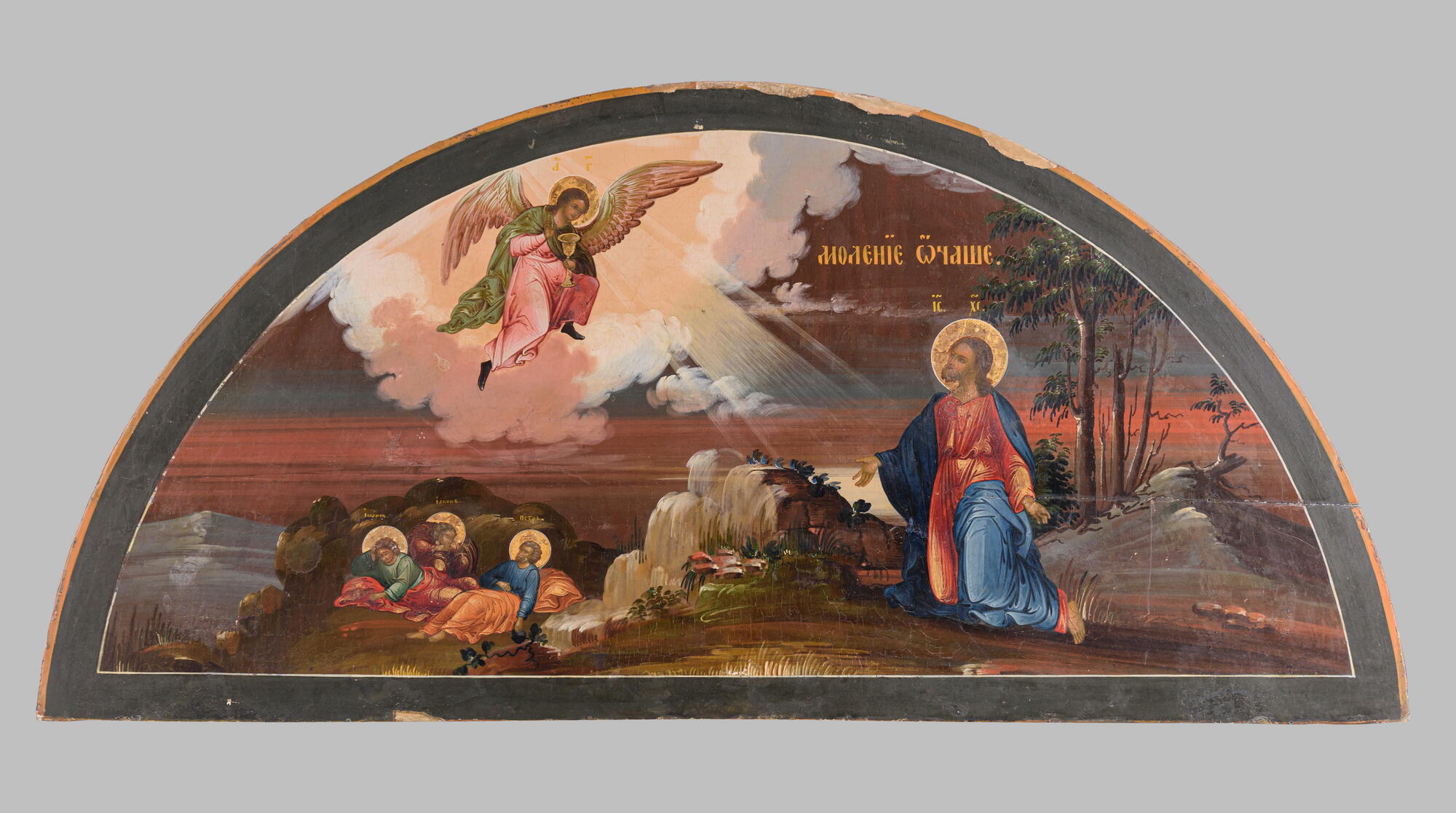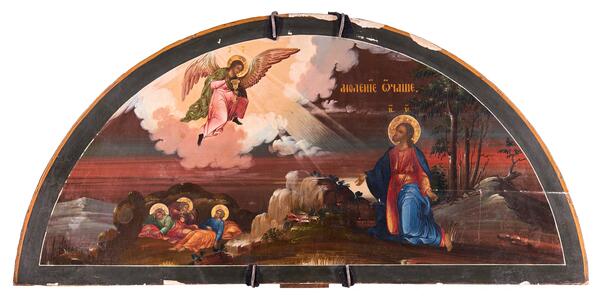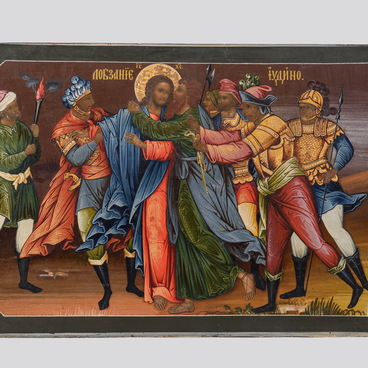“The Agony in the Garden” is a popular iconographic plot based on the texts of the Gospels of Mark, Matthew and Luke (John only briefly mentions it). In Russian iconography, it is known as “The Prayer of the Cup”.
On the eve of Judas’ betrayal, arrest and subsequent sufferings on the cross, in anticipation of them, Christ goes to the Garden of Gethsemane, where He has previously prayed. Bringing three of His closest disciples: Peter, James and John, He retreats to the depths of the garden, where He prays to His Heavenly Father to strengthen His spirit before the coming trials.
Researchers compare the garden in Gethsemane with the Garden of Eden: in one the fall of man took place, in the other the redemptive suffering for the human race begins. Having fallen “on His face, ” Christ blesses the earth, cursed for Adam’s sin.
In anguish, horror, and in the words addressed to the disciples, “My soul is exceedingly sorrowful”, Jesus first reveals to the apostles the weakness of human nature.
Three times He leaves the disciples, calling them to watch and pray with Him together, and three times He calls out to His Father. The struggle of human and Divine natures is most strongly felt in the first prayer, in the request, if possible, to let this cup pass from Him; the second prayer, as well as the third, repeating it, is filled with readiness to fully accept the will of the Almighty. The cup that Christ speaks of is an overflowing cup of human sins. Metropolitan Philaret of Moscow writes that this cup could have drowned the whole world if the Savior alone had not accepted and drunk it.
The most ancient icons painted on this subject by Byzantine masters date back to the 11th century. The plot of the presented miniature icon echoes them: at a distance from the praying Christ are the apostles who fell asleep “from sadness”, and above Him is an angel with a cup in its hand, sent to comfort and strengthen the Son of God.
The composition of the image is quite peculiar. The kneeling Jesus occupies the right part of the icon, the apostles and the angel are on the left; in the center is a light descending on the Savior from heaven as a blessing of God. The pure colors with which the figures are painted stand out against a predominantly dark brown background.
The icon belonged to the Vladimir Chapel of the Nativity Church in Balakhna. It was painted in the 1830s by Palekh masters for the Feasts tier of the iconostasis. It entered the museum on February 28, 1977, in 1994 it was restored by the staff of the Interregional Scientific and Restoration Art Department under the leadership of Valery Fyodorovich Kosushkin.
On the eve of Judas’ betrayal, arrest and subsequent sufferings on the cross, in anticipation of them, Christ goes to the Garden of Gethsemane, where He has previously prayed. Bringing three of His closest disciples: Peter, James and John, He retreats to the depths of the garden, where He prays to His Heavenly Father to strengthen His spirit before the coming trials.
Researchers compare the garden in Gethsemane with the Garden of Eden: in one the fall of man took place, in the other the redemptive suffering for the human race begins. Having fallen “on His face, ” Christ blesses the earth, cursed for Adam’s sin.
In anguish, horror, and in the words addressed to the disciples, “My soul is exceedingly sorrowful”, Jesus first reveals to the apostles the weakness of human nature.
Three times He leaves the disciples, calling them to watch and pray with Him together, and three times He calls out to His Father. The struggle of human and Divine natures is most strongly felt in the first prayer, in the request, if possible, to let this cup pass from Him; the second prayer, as well as the third, repeating it, is filled with readiness to fully accept the will of the Almighty. The cup that Christ speaks of is an overflowing cup of human sins. Metropolitan Philaret of Moscow writes that this cup could have drowned the whole world if the Savior alone had not accepted and drunk it.
The most ancient icons painted on this subject by Byzantine masters date back to the 11th century. The plot of the presented miniature icon echoes them: at a distance from the praying Christ are the apostles who fell asleep “from sadness”, and above Him is an angel with a cup in its hand, sent to comfort and strengthen the Son of God.
The composition of the image is quite peculiar. The kneeling Jesus occupies the right part of the icon, the apostles and the angel are on the left; in the center is a light descending on the Savior from heaven as a blessing of God. The pure colors with which the figures are painted stand out against a predominantly dark brown background.
The icon belonged to the Vladimir Chapel of the Nativity Church in Balakhna. It was painted in the 1830s by Palekh masters for the Feasts tier of the iconostasis. It entered the museum on February 28, 1977, in 1994 it was restored by the staff of the Interregional Scientific and Restoration Art Department under the leadership of Valery Fyodorovich Kosushkin.



